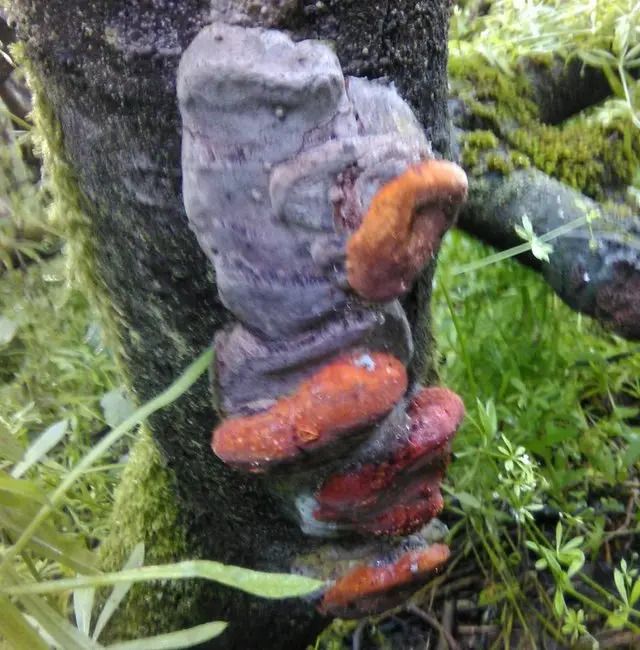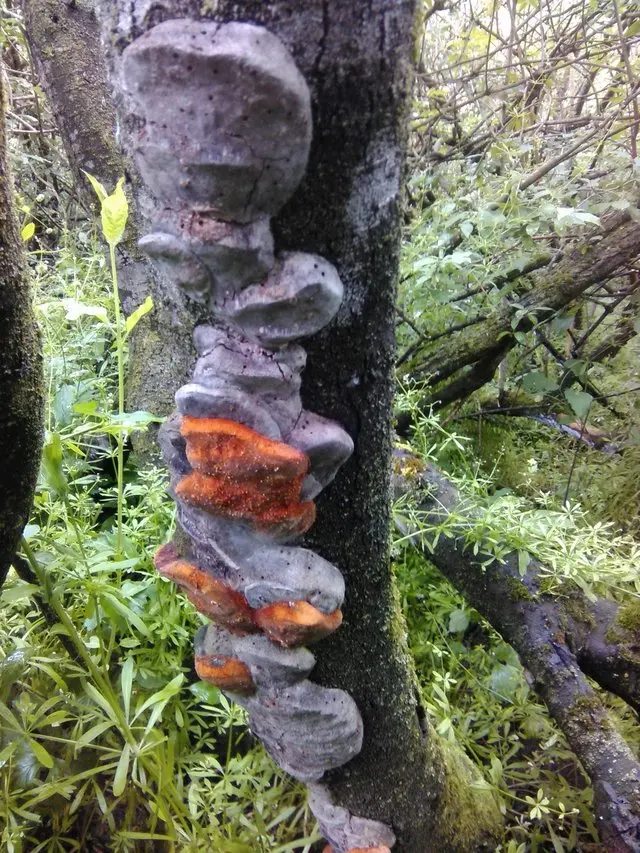Phellinus tuberculosus (Phellinus tuberculosus)
- Division: Basidiomycota (Basidiomycetes)
- Subdivision: Agaricomycotina (Agaricomycetes)
- Class: Agaricomycetes (Agaricomycetes)
- Subclass: Incertae sedis (of uncertain position)
- Order: Hymenochaetales (Hymenochetes)
- Family: Hymenochaetaceae (Hymenochetes)
- Genus: Phellinus (Phellinus)
- Type: Phellinus tuberculosus (Phellinus tuberculate)
:
- Phellinus pomaceus
- Tuberculosis mushroom
- Ochroporus tuberculosus
- Boletus pomaceus
- Scatiform mushroom
- prunicola famines
- Pseudofomes prunicola
- Half of the plums
- Scalaria fusca
- Boudiera scalaria
- Polyporus sorbi
- Polyporus ignarius var. diffuse reflection
- Polyporus corni

Fruit bodies are perennial, small (up to 7 cm in diameter). Their shape varies from fully or partially prostrate (which is very characteristic of this species), cushion-shaped – to hoof-shaped. The cap is often sloping down, the hymenophore is convex. Partially prostrate and hoof-shaped forms are often arranged in imbricate groups.
Young hats are velvety, rusty brown (up to bright red), with age the surface becomes corky, gray (up to black) and cracks. The rounded sterile edge is reddish, slightly lighter than the hymenophore.
The surface of the hymenophore is brown, from ocher or reddish to tobacco. The pores are rounded, sometimes angular, 5-6 per 1 mm.

The fabric is rusty-brown, hard, woody.
Spores more or less spherical or broadly ellipsoid, 4.5-6 x 4-4.5 μ, colorless to yellowish.
Plum false tinder fungus grows on living and shrunken trunks of representatives of the genus Prunus (especially on plum – for which it got its name – but also on cherry, sweet cherry, bird cherry, hawthorn, cherry plum and apricot). Sometimes it can be found on apple and pear trees, but apart from trees of the Rosaceae family, it does not grow on anything else. Causes white rot. Found in forests and gardens of the northern temperate zone.

On the same tree species there is a false blackish tinder fungus Phellinus nigricans, which differs in the shape of the fruiting bodies. The prostrate form of growth is the “calling card” of the plum false tinder fungus.









